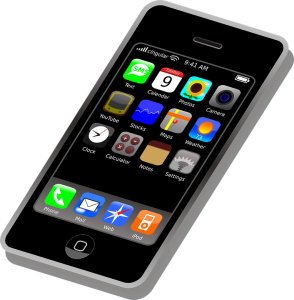Remaining Relevant Through Leveraging Technology and Member Needs
 As you are probably well aware, Apple’s® iPhone® turned 10 years old recently. Of the many articles written to commemorate this occasion, a couple in particular caught our eye. In iPhone Review Redux: 10 Years Later, So Slow, So Small (Source: The Wall Street Journal), the author describes her experience trying to use an original iPhone for a week in today’s world. She says, “I made it 12 hours.” As groundbreaking as the iPhone was back in 2007, that’s a little hard to imagine. However, given the author’s experience with comparatively slow speeds, poor graphics and sound, a 2-megapixel camera, and no Siri®, we start to realize just how far technology has come in the last decade. Of course, with these technological developments have come changes in how consumers interact with each other and the organizations with which they do business. Take stock of how things have changed around your credit union in the last 10 years from a technology perspective. Have you added new technology? Upgraded? Does your credit union have technology today it did not have in 2007? Is your member interaction different today than it was a decade ago? The answer to all of these questions is probably a resounding Yes!
As you are probably well aware, Apple’s® iPhone® turned 10 years old recently. Of the many articles written to commemorate this occasion, a couple in particular caught our eye. In iPhone Review Redux: 10 Years Later, So Slow, So Small (Source: The Wall Street Journal), the author describes her experience trying to use an original iPhone for a week in today’s world. She says, “I made it 12 hours.” As groundbreaking as the iPhone was back in 2007, that’s a little hard to imagine. However, given the author’s experience with comparatively slow speeds, poor graphics and sound, a 2-megapixel camera, and no Siri®, we start to realize just how far technology has come in the last decade. Of course, with these technological developments have come changes in how consumers interact with each other and the organizations with which they do business. Take stock of how things have changed around your credit union in the last 10 years from a technology perspective. Have you added new technology? Upgraded? Does your credit union have technology today it did not have in 2007? Is your member interaction different today than it was a decade ago? The answer to all of these questions is probably a resounding Yes!
Now, fast-forward, as does the article In 10 Years, Your iPhone Won’t Be a Phone Anymore (Source: The Wall Street Journal). In this article, the author imagines a future where the consumer is more wired-in than ever before. Smarter, wearable technology, artificial intelligence, augmented reality—it’s almost overwhelming. Our gadgets may literally direct our daily lives, according to this article. Whether or not the future turns out the way this article describes, we can surely bet it will make the technology we have today seem ancient, just as the current iPhone makes the original model look outdated. How will your credit union’s technology change?  What new technologies might there be in 10 years that do not exist today? How might your members choose to do business with you in 2027? Are you leveraging the data that is already available today, and new data that may be available in the future, to make decisions and anticipate member needs?
What new technologies might there be in 10 years that do not exist today? How might your members choose to do business with you in 2027? Are you leveraging the data that is already available today, and new data that may be available in the future, to make decisions and anticipate member needs?
These changes not only impact traditional competition, but also have facilitated new entrants looking to disrupt the industry.
How will your value proposition be apparent in this environment? Consider strategic sessions revolving around this topic with outcomes focused on actions that can be taken in the near term, intermediate term, and long term to be positioned for relevancy in the future.

